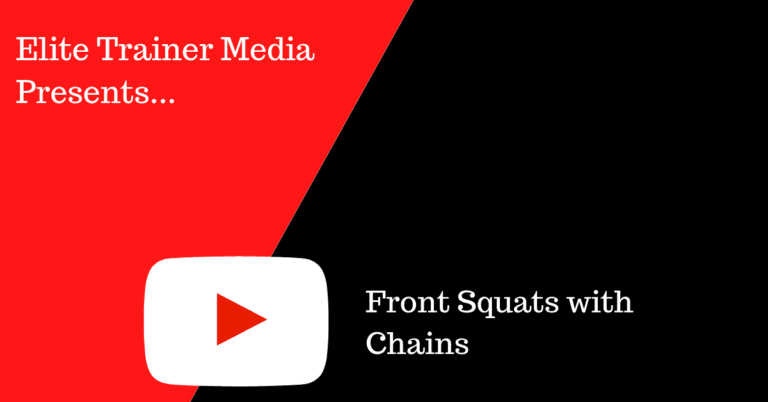Weight training can have a profound effect on bone density — but only if the weights lifted are truly significant and supported by the spine, not just moved by the limbs. Squats fit the bill perfectly. Unfortunately, most females don’t go heavy enough to fully reap these bone-building benefits. A common concern among women is…
Here’s a quick look at wave loading in action — with a twist of accommodating resistance. Chains not only change the strength curve… they change the game! For a full breakdown of this method (and why it’s not just for the guys), check out:Females, Chains, and Wave Loading → https://theelitetrainer.com/females-chains-and-wave-loading/
When performing unilateral (one side at a time) training, the common advice is to start with your weaker side while you’re fresh, and then train the stronger side afterward. Many times, that strategy works well. However, there’s another school of thought that suggests starting with your stronger side to potentiate the nervous system — essentially…
When you’re feeling sick, the knee-jerk reaction is often to skip training and rest. But in some cases, exercise can actually be beneficial. To help decide whether or not you should train when you’re under the weather, use the neck rule: The Neck Rule → If your symptoms are above the neck — like a…
Several variables influence muscle hypertrophy (growth), including how much weight you lift (intensity), how many total reps you perform (volume), and how often you lift (frequency). But there may be one variable that trumps them all… Assuming intensity, volume, and frequency are sufficient, the most important variable for muscle hypertrophy is the amount of effort…
We all experience injuries in life. Minor ones are usually no big deal—you make a few adjustments to your training, give it time, and things typically return to normal. Then there are the major injuries—the ones that require surgery, long rehabilitation, and a tremendous amount of effort just to get back to baseline, if at…
There are certain exercises that are simply too uncomfortable or seem to fatigue everything but the target muscle. Usually, you just stay away from them, but with some ingenuity, you can often find a solution to the problem. Here are five examples that are common in the gym: Front Squat Problem: Hard on wrists Solution:…
In strength training, it’s best to coax or nudge adaptation, or so we’re told. The body can only adapt at a certain rate and trying to force adaptation can invite trouble. Well, like many things in life, the greater the risk, the greater the reward! Most coaches will simply say, “Don’t force it,” but that…
Staying up to date with scientific research can give you a competitive edge as a personal trainer. Here are some recent findings that can enhance your knowledge and improve your clients’ results: A New RPE Scale for Resistance Training Ratings of perceived exertion are a valid method of estimating the intensity of a resistance training…
Did you know that simply shifting your grip on a dumbbell can change muscle activation? Using an offset grip—where you hold the dumbbell closer to one side—tips the balance and increases recruitment of specific muscle fibers. For example, in biceps curls, positioning your hand toward the outer edge of the dumbbell targets the short head…










